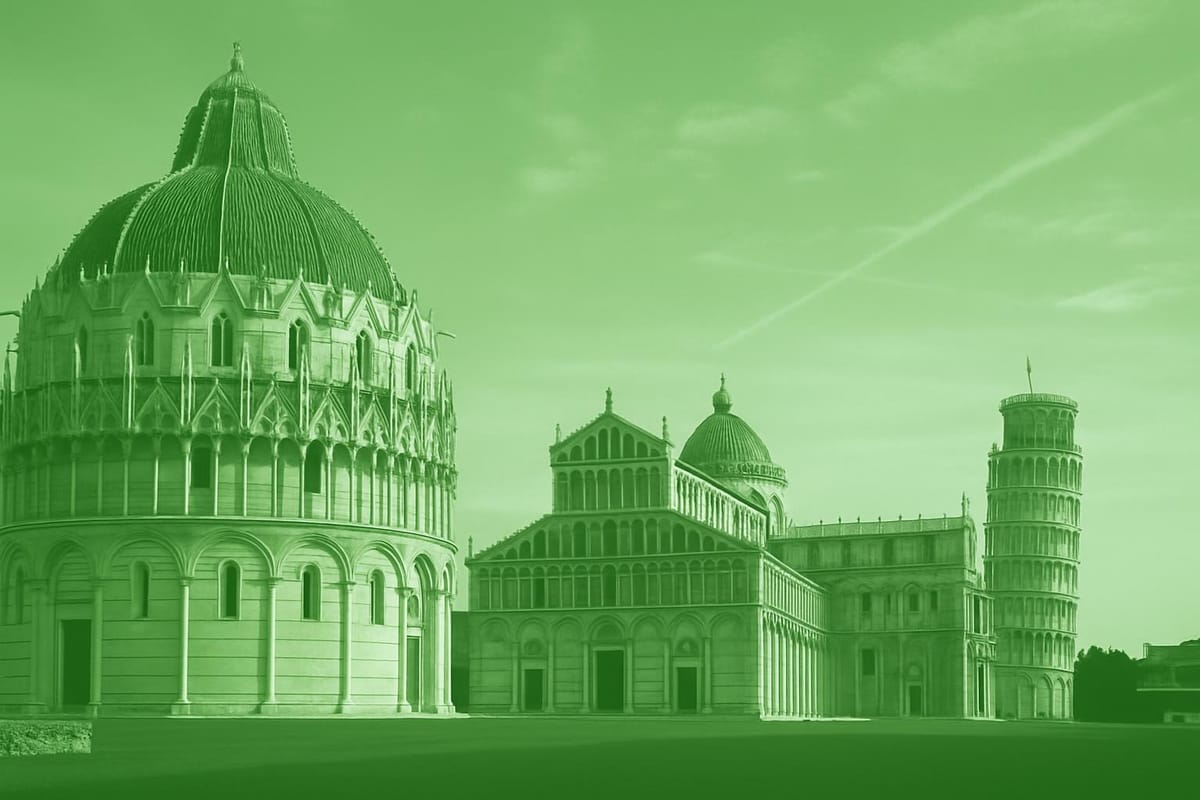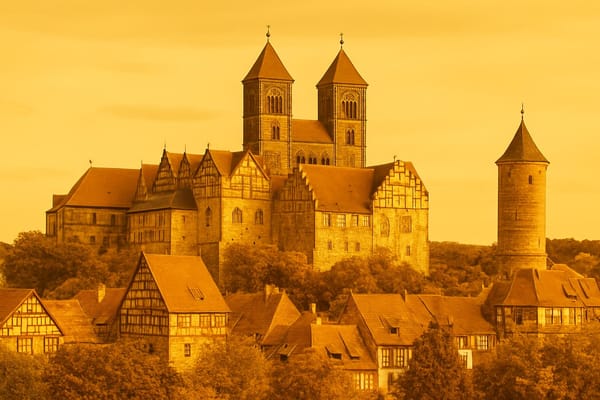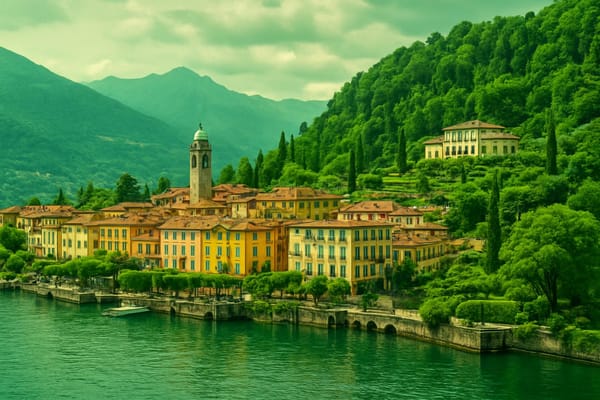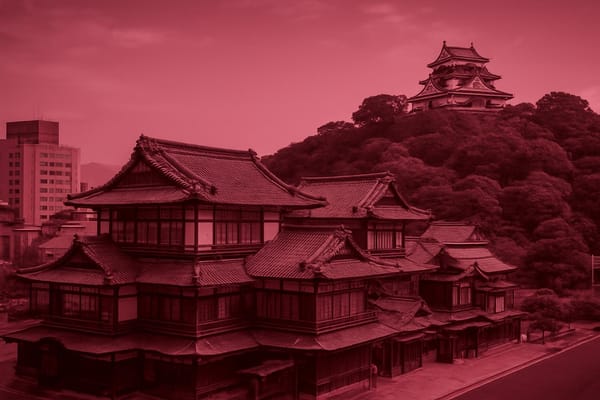Pisa
Explore the Leaning Tower, UNESCO Piazza dei Miracoli, cathedral & charming riverfront.

Important things to know about Pisa
Pisa, Italy, is a compact Tuscan city where a strong sense of history blends with lively contemporary life, and its character is shaped by a winding river, broad avenues, and intimate lanes; the city’s identity is tied to centuries of scholarship and university traditions that keep student energy at the heart of daily rhythms, influencing cafes, bookstores, and affordable cultural offerings that appeal to both residents and newcomers. The urban fabric mixes medieval stonework with Renaissance and modern touches, creating a varied streetscape where artisans, small businesses, and scientific research centers coexist, and where the local economy balances tourism with education, technology, and agriculture from surrounding lowlands. Life in Pisa is punctuated by neighborhood markets, seasonal festivals, and a culinary scene that highlights regional local cuisine, fresh seafood from nearby coasts, and traditional Tuscan flavors served in family-run trattorie as well as contemporary eateries; this culinary diversity reflects the city’s openness to innovation while preserving culinary heritage. Public transport and compact distances make Pisa walkable and bike-friendly, and green spaces along the river offer residents places to relax and socialize, while cultural institutions, theaters, and music venues provide year-round programming that enriches community life. With a mild Mediterranean climate, strong regional connections by rail and road, and a reputation for academic excellence and creative energy, Pisa remains an appealing place to visit, study, and live in Italy, offering a layered urban experience that combines historic depth, everyday authenticity, and modern vitality.
Sightseeing hot-spots in Pisa
Pisa is world-famous for its architectural marvels and compact, walkable center that makes sightseeing a delight. At the heart of the city lies the Piazza dei Miracoli, where the iconic Leaning Tower of Pisa stands as a must-see symbol of Italy. The elegant blend of Romanesque and medieval art is visible in the surrounding monuments, and every visitor who wants to visit Pisa for its history and photography will find the square irresistible. The sense of stone, marble, and centuries of craftsmanship gives the city a unique atmosphere that elevates typical things to do in Pisa into unforgettable experiences.
Exploring beyond the tilt of the tower, the interior treasures reward curious travelers: the Cathedral of Santa Maria Assunta, the resonant Baptistery, and the serene Camposanto Monumentale contain frescoes, sculptures, and acoustics that enchant art lovers and history buffs alike. For a deeper context, the Museo dell'Opera del Duomo offers artifacts and restoration insights that enrich any Pisa sightseeing itinerary. Climbing the Leaning Tower to enjoy panoramic views over the city and the nearby Arno River is a highlight for many; the narrow spiral and unusual tilt make the ascent both an architectural thrill and a prime photo opportunity.
Practical tips enhance your visit: Pisa’s central location makes it an easy day trip from Florence or a relaxed base for exploring Tuscany, with trains and pedestrian streets leading to charming cafes and local cuisine. Strolling along the Arno River at sunset provides one of the most romantic backdrops in Italy, while the medieval lanes around Borgo Stretto and the academic buzz near the university bring lively evenings. Whether you aim to capture the perfect shot of the Leaning Tower, climb for spectacular city vistas, or savor authentic Tuscan flavors, the sightseeing highlights of Pisa deliver rich cultural rewards and accessible urban charm.
Hotels to enjoy in Pisa
Pisa offers a surprising variety of hotels in Pisa to suit every traveler, from budget stays to elegant luxury properties, many located within easy walking distance of the Leaning Tower and the charming historic center. Visitors searching for Pisa hotels will find family-run bed and breakfasts, contemporary boutique hotels with stylish interiors, and larger chains that promise dependable service and modern conveniences like free Wi‑Fi, air conditioning and on-site breakfast. Staying near the Arno River or in the city center lets guests soak up the local atmosphere, wander cobbled streets, and reach museums and piazzas without a car, while properties near Pisa Centrale station or Galileo Galilei Airport are perfect for efficient arrivals and departures.
Choosing accommodation in Pisa also means balancing location, price and amenities: some hotels emphasize panoramic rooftop terraces with views of iconic monuments, others focus on family-friendly rooms or business services for work trips. For those planning a day trip into Tuscany, many Pisa hotels offer helpful concierge services and local insights for vineyard tours, cooking classes and regional transport. Whether you want to be steps from the cathedral square or prefer a quieter neighborhood with authentic trattorias, a well-reviewed Pisa hotel can enhance your visit and make exploring nearby attractions effortless, ensuring comfortable nights and convenient access to the best of the city.
Restaurants to try in Pisa
Pisa is not only home to the iconic Leaning Tower and the historic Piazza dei Miracoli, it also offers a vibrant dining scene where Tuscan cuisine meets fresh coastal flavors. Strolling from the monuments you'll find an array of restaurants in Pisa ranging from cozy osterie and family-run trattorie to contemporary bistros and refined dining rooms. Local menus celebrate seasonal produce with dishes like pappa al pomodoro, hearty ribollita, and simply grilled fish caught in the nearby Tyrrhenian Sea, paired with regional wines such as Vernaccia and Chianti. For travelers searching for the best restaurants in Pisa, the city’s culinary map highlights both traditional comfort foods and innovative chefs who reinterpret classic recipes with a modern twist, ensuring memorable meals whether you seek rustic charm or gastronomic creativity.
When planning where to eat, keep in mind that the most authentic experiences often happen away from the busiest tourist streets-explore back alleys and neighborhood squares to discover hidden gems and friendly locals recommending their favorite plates. Reservations are advisable during peak travel seasons, especially if you want to sample popular specialties or sit in atmospheric dining rooms overlooking historic facades. Food lovers asking “where to eat in Pisa” should also leave room for artisanal gelato, local cheeses, and market visits to taste fresh olive oil and seasonal produce. With its mix of seaside freshness, hearty Tuscan tradition, and a growing contemporary scene, Pisa’s restaurants deliver a satisfying culinary journey that complements every visitor’s cultural itinerary.
Best shopping stops in Pisa
Pisa shopping delights begin in the heart of the city where historic streets and modern boutiques blend perfectly. Strolling along Borgo Stretto, visitors discover an arcaded medieval avenue filled with stylish fashion boutiques, independent bookshops, and charming cafés that make shopping in Pisa an experience steeped in atmosphere. A few steps away, Via Santa Maria leads toward the famous Piazza dei Miracoli and is lined with artisan ateliers and specialty stores carrying leather goods, handcrafted jewelry and locally made ceramics. For travelers seeking a mix of contemporary design and traditional craftsmanship, the historic center offers everything from designer windows to tucked-away antique shops; when planning a shopping route, keep the Leaning Tower in mind as a central landmark that places many shops within an easy walking radius.
Beyond the main streets, the best of Pisa shopping reveals itself at bustling local markets and independent workshops where artisan crafts and food specialties shine. Markets and specialty food stores present excellent opportunities to pick up regional olive oil, Tuscan wine, biscotti, and other edible souvenirs that carry the taste of the area. For authentic keepsakes, look for pieces made by local craftsmen or hand-painted ceramics that reflect Pisan motifs, and don’t overlook the small galleries showcasing local designers. Whether you’re hunting for unique souvenirs from Pisa, quality leather goods, or a memorable culinary gift, the city rewards curious shoppers with a compact, walkable layout and a rich mix of traditional and contemporary offerings that make each purchase feel like a story to bring home.
Nightlife highlights in Pisa
Pisa bursts into life after sunset, offering a compact but exciting Pisa nightlife scene that suits both tourists and the lively student crowd. From cozy wine bars and buzzing cocktail lounges to the traditional aperitivo spots around the Piazza dei Miracoli, evenings blend history with contemporary fun. Strolling past the illuminated Leaning Tower and along the Arno creates picture-perfect moments before settling into a bar with local craft beers or elegant cocktails. Cafés stay open late, and many venues feature outdoor seating where you can enjoy people-watching and the mild Tuscan air, making the nightlife in Pisa appealing for relaxed nights or festive evenings.
For those seeking music and dancing, Pisa Italy hosts an assortment of venues from intimate clubs to live music bars showcasing jazz, indie, and DJ sets that reflect the city's diverse tastes. The university population fuels a vibrant student nightlife, ensuring affordable entry and eclectic crowds. Seasonal events, pop-up parties, and cultural nights add variety, while tapas-style plates and regional wines keep the culinary side exciting. Navigating the city at night is easy on foot, and the concentrated downtown scene means you can experience the best of Pisa nightlife in a single evening without long travel times.
Getting around in Pisa
Pisa’s travel hub is easy to navigate: Galileo Galilei Airport (PSA) sits just outside the historic center and offers a compact, efficient airport experience with a range of low-cost carriers, car rental desks, taxis and frequent bus services, while the city’s rail backbone, Pisa Centrale, is a major station served by Trenitalia regional and intercity trains connecting quickly to Florence, Lucca, Livorno and beyond; travelers arriving at the airport can use the automated shuttle PisaMover to reach Pisa Centrale in minutes, or take a short taxi or bus ride to drop-off points close to the Leaning Tower, and there is also the smaller Pisa San Rossore station which sits nearer the historic center for convenient access on local services. Train frequency is good for regional hops and sensible for day trips-fast frequent regional trains to Florence make same-day visits easy and longer-distance InterCity options link to Rome and northern Italy-while the airport’s proximity to the rail hub makes transfers seamless for tourists and business travelers seeking efficient Pisa travel, quick connections and straightforward access to Tuscany’s highlights.
Culture must-see's in Pisa
Pisa, Italy, offers a compact tapestry of history and living culture anchored by the world-famous Leaning Tower of Pisa and the luminous expanse of the Piazza dei Miracoli. Visitors are drawn to the striking ensemble that includes the Pisa Cathedral, the ornate Baptistery, and the solemn Camposanto Monumentale, all of which illustrate the city’s rich medieval heritage and Romanesque architecture. Beyond the postcard views, the streets around Borgo Stretto and along the Arno River reveal cozy cafes, artisan shops, and an energetic student scene fueled by the renowned University of Pisa and historic academic institutions like the Scuola Normale. Seasonal events such as the Luminara di San Ranieri and the traditional regattas transform riverside evenings into unforgettable cultural experiences, showcasing local devotion, music, and communal pride.
The cultural fabric of Pisa extends to museums and gastronomy that celebrate Tuscan identity; galleries like the Museo dell'Opera del Duomo hold priceless works that contextualize the city’s artistic legacy, while trattorie and enotecas serve classic Tuscan cuisine and regional wines, making culinary discovery part of the cultural itinerary. Walking the narrow lanes and stepping into lively piazzas, visitors experience a blend of quiet scholarly charm and vibrant street life, where contemporary festivals, markets, and concerts sit comfortably alongside centuries-old monuments. For travelers seeking both iconic landmarks and authentic local rhythm, Pisa delivers an evocative mix of history, art, and everyday Italian warmth.
History of Pisa
Pisa’s story begins long before the world-famous monuments that draw millions each year; its roots reach into Etruscan and Roman times when the strategic mouth of the Arno River made the town an important port and a crossroads of Mediterranean trade. By the early Middle Ages Pisa evolved from a fishing village into a powerful Maritime Republic, a seafaring city-state that competed with Genoa, Venice and Amalfi for control of trade routes and colonies. The wealth and civic pride that flowed from maritime commerce funded an extraordinary cultural and architectural flowering: the white marble façades of the Pisa Cathedral and the design of the Campo dei Miracoli are monuments to that era. Pisa’s fortunes rose through naval victories and commercial expansion in the 11th and 12th centuries, but rivalries culminated in decisive naval defeats and political shifts that weakened the city-state. During these centuries, Pisa also became known for its schools of law and for fostering a distinct artistic identity, a legacy reflected in churches, public buildings and manuscripts that survive today.
The later centuries saw Pisa navigate changing political tides as it passed under Florentine influence and eventually became part of the Grand Duchy of Tuscany, with the powerful Medici family imprinting new administrative and cultural directions. The Leaning Tower of Pisa, arguably the most recognizable symbol of the city, encapsulates Pisa’s layered history: a bell tower begun in 1173 that would later tilt due to soft subsoil, becoming an accidental icon of medieval ambition and modern preservation. The Renaissance and subsequent periods brought both decline and revitalization, as Pisa adapted from maritime commerce to agriculture, industry and then tourism. In the 19th and 20th centuries, infrastructural improvements and archaeological interest renewed appreciation for the city’s classical and medieval heritage. Today, visitors encounter a living mosaic of epochs where Pisa balances local traditions with global appeal, and the city’s museums, historic neighborhoods and academic institutions continue to explore and celebrate the complex history of Pisa, ensuring that its past remains central to cultural tourism and scholarly research.



